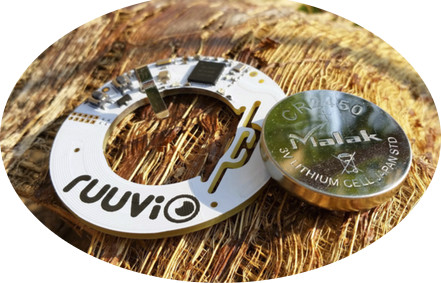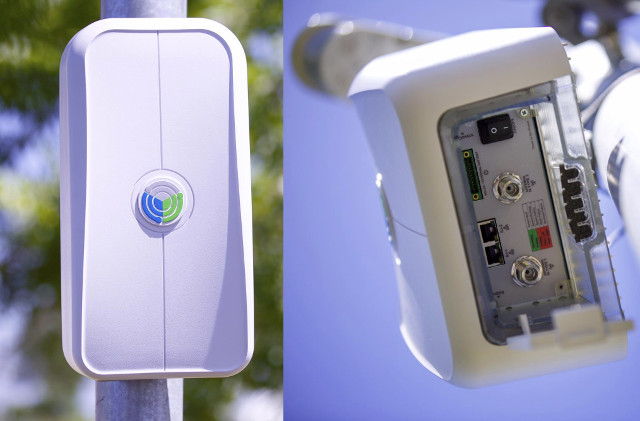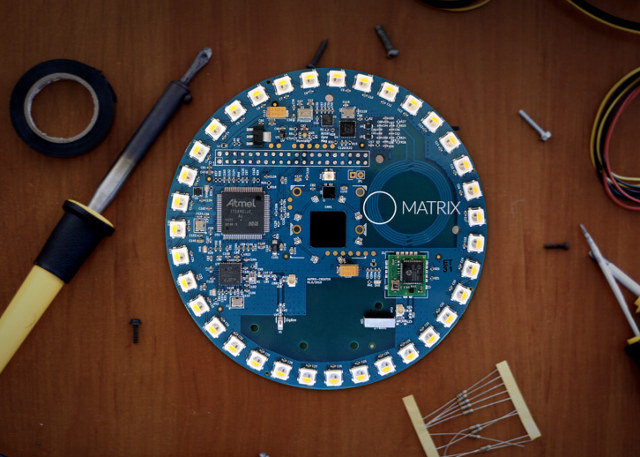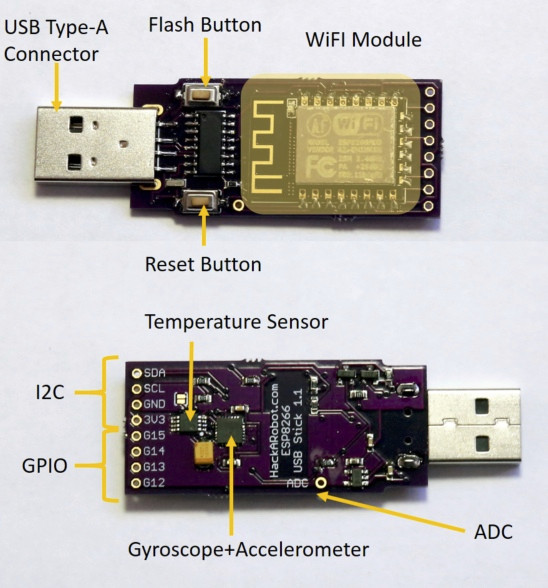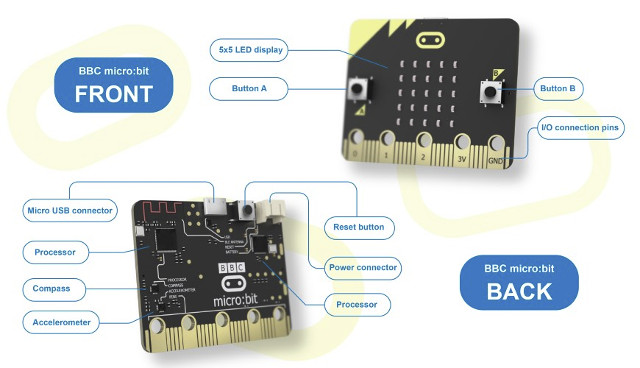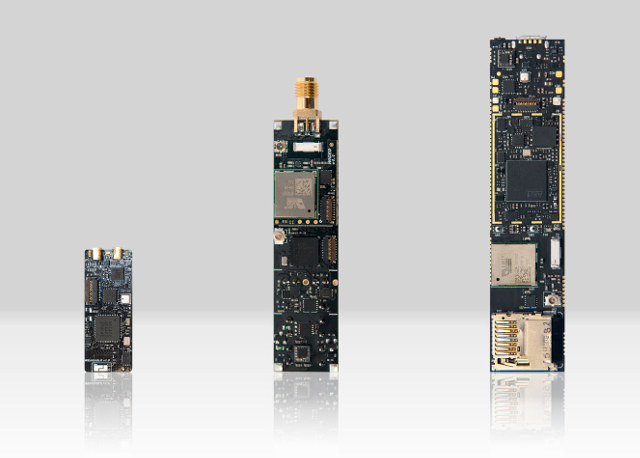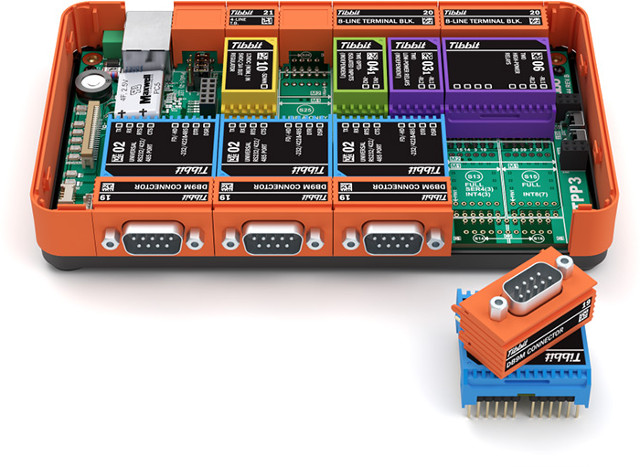I’ve recently featured Puck.js Bluetooth 4.2/5.0 Beacon on CNX Software, but there’s another similar option with RuuviTag, also powered by the latest Nordic Semi nRF52832 ARM Cortex-M4 SoC, and RuviiTag+ version that includes multiple sensors: 3-axis accelerometer, and temperature, humidity, and pressure sensor. RuuviTag & RuuviTag+ specifications: SoC – Nordic Semi nRF52832 ARM Cortex-M4F micro-controller @ 64 MHz with Bluetooth Smart and NFC Connectivity Bluetooth 4.2 Smart, Bluetooth 5.0 Ready; over 500 meters line of sight range (with -4dBm power); up to 1.4 km with +4 dBm Integrated NFC antenna Expansion – 8x through holes with 6x GPIOs, and 2x power signals Sensors On-chip temperature sensor RuuviTag+ – Bosch BME280 environmental sensor (pressure, humidity, and temperature), STMicro LIS2DH12 3-axis accelerometer Misc – User/reset button, 2x LEDs, 10-pin SWD debug connector Battery – CR2450 / CR2477 battery up to 10 years depending on application Dimensions – N/A Temperature Range – -40°C […]
OpenCellular is Facebook’s (soon to be) Open Source Wireless Access Platform
A few months after Canonical and Lime Micro LimeSDR open source software defined radio aiming to be used as a development platform, but also as the base for low cost cellular or other wireless base stations, Facebook has announced their own open source wireless access platform with OpenCellular project whose goal is to lower the cost of Internet connectivity in remote areas where the infrastructure does not exist. This is how Marc Zuckerberg summarizes the project: We designed OpenCellular as an open system so anyone — from telecom operators to researchers to entrepreneurs — can build and operate wireless networks in remote places. It’s about the size of a shoe box and can support up to 1,500 people from as far as 10 kilometers away. Along with our solar-powered aircraft Aquila and high-bandwidth laser beams, OpenCellular is the next step on our journey to provide better, more affordable connectivity to […]
$99 MATRIX Creator Raspberry Pi Add-on Board Features Plenty of Sensors, a 2.4 GHz Radio, and More
MATRIX Creator is a round-shaped add-on board for Raspberry Pi boards with various sensors, a microphone array, an LED array, a Xilinx FPGA, an Atmel Cortex-M3 MCU, wireless connectivity via Z-Wave, ZigBee, Thread, and NFC, as well as various I/Os…. MATRIX Creator specifications: FPGA – Xilinx Spartan 6 FPGA MCU – Atmel ATSAM3S2C Cortex-M3 MCU Connectivity – ZigBee, Thread, Z-Wave and NFC Sensors – Ultraviolet, pressure, humidity, temperature, 3D accelerometer, 3D gyroscope, 3D magnetometer Audio – 8x MEMs microphone array with Alexa support Expansion – 2x ADC, 17x digital GPIOs, SPI, I2C, UART; 40-pin connector for Raspberry Pi 2/3 Misc – 35x RGBW LEDs array, IR Rx/Tx, infrared ring for the Raspberry Pi NoIR camera I can’t think of the single application that would make use of all features of this board, but the least we can say is that it’s extremely versatile. The developers are providing MATRIX OS based […]
WiThumb is an ESP8266 WiFi USB Adapter with Motion and Temperature Sensors (Crowdfunding)
There are now plenty of Espressif ESP8266 boards or module to play with, but most of them require some cables or wires, at least for power. WiThumb does not need any of that as it’s designed to be plugged into any USB ports, and includes a 6-axis motion sensor, and a temperature sensor. WiThumb USB dongle specifications: SoC – Espressif ESP8266 32-bit MCU with 802.11b/g/n WiFi Storage – 4MB Flash memory Sensors – Temperature sensor (+/- 0.25C typical accuracy, -40 to 125 C range), 6-axis gyroscope + accelerometer Expansion – Breadboard friendly through holes with 1x 10-bit ADC, I2C and 4x GPIOs USB – USB type A connector Misc – Reset and flash buttons Power – 5V via USB port Dimensions – 4.8 x 2.2 cm The USB stick can be programmed like most ESP8266 board, i.e. via USB using the Arduino IDE. In case you wonder what kind of […]
You can now buy BBC micro:bit board for $19
BBC recently distributed micro:bit boards to UK schools to get student interested in electronics and help them learn more about this subject, but so far it was not for sale to the general public, but this has now changed since the British broadcaster now launched the board for 13 GBP (~$19) via Element14/Farnell and others distributors. The board is powered by Nordi Semi nRF51822 SoC with ARM Cortex M0 micro-controller and Bluetooth LE connectivity, features motion sensors, plenty of LEDS, a few buttons, a micro USB connector for power & programming, as well as a header for LiPo batteries. There are various ways to program the board either interpreted languages such as Python or JavScript, or graphical drag and drop programs such as Microsoft Block Editor. All technical details and example projects available on Micro:bit official website. Beside the board only, several kits are being offered included micro:bit Go with […]
$49 STEVAL-WESU1 Wearable Sensor Unit Reference Design is Based on STMicro STM32 MCU
STMicroelectronics STEVEL-WESU1 is a wearable open source hardware reference design and development kit comprised of a board with STM32L1 ARM Cortex-M3 micro-controller, BlueNRG-MS Bluetooth LE chip, and sensors, a battery, and a watch band. STMicro “WESU” specifications and features: MCU – STMicro STM32L151VEY6 32-bit ARM Cortex-M3 MCU @ 32 KHz to 32 MHz, 512KB flash, 80 KB SRAM Connectivity – Bluetooth 4.0 LE via BlueNRG-MS BLE network processor Sensors – 3D accelerometer + 3D gyroscope (LSM6DS3), 3-axis magnetometer (LIS3MDL), MEMS pressure sensor (LPS25HB) USB – 1x micro USB port for recharging Debugging – SWD connector for debugging and programming capability Power 100 mAh Li-Ion battery included, UN38.3 tested and certified STNS01 Li-Ion linear battery charger STC3115 Fuel gauge IC Watch strap with plastic housing included Certifications – FCC (FCC ID: S9N-WESU1), IC (IC: 8976C-WESU1), RoHS The kit can be controlled by ST WeSU app for Android and iOS, and developed using BlueST […]
LX IoT Cores Are Made for IoT and Wearables with Bluetooth LE, ANT+, 2G/3G, Sigfox, LoRa, and More
LX Group, an Australian company specializing in electronics design and embedded systems, has introduced three wireless modules for IoT and wearables which they call “LX IoT Cores”, and embeds various wireless protocol such as Bluetooth LE/Ant+, 2G/3G connectivity, WiFi, Lora, Sigfox, Taggle, etc… Let’s go though the main technical specs for the three modules, one of which it itself modular (hence the max and min size) depending on your requirements. LX Cellular Core (Right) MCU – STMicro STM32F217IGH6 ARM Cortex-M3 MCU @ 120 MHz with 1MB flash, 128kB RAM Storage – 1x micro SD card reader Communication Interfaces Radios – 2G/3G, WiFi, BLE, ANT+, provision for LoRa, Taggle, SigFox, optional GPS via daughter board Wired – USB, RS485, UART, SPI, I2C, Digital IO, ADC Sensors – Ambient Luminosity, accelerometer, gyroscope, magnetometer, temperature, humidity, air pressure, microphone USB – 1x micro USB port Misc – Reset and 2x user buttons, 2x […]
Tibbo Project System is a Modular Linux IoT Prototyping Platform based on TI Sitara Cortex A8 Processor
If you’ve found yourself needing to quickly demo a system that does not look like a mess of wire to a customer, or your project is requires low production volumes, making the cost of designing your own and mass-producing the hardware prohibitive, Tibbo Project System might be worth looking into. It features an almost bare board powered by Texas Instruments Sitara processor, and a large area for Tibbit blocks to add features as needed, as well as an enclosure. Size 3 Linux Project PCB (LTPP3) specifications: SoC – Texas Instruments Sitara AM335x Cortex A8 processor up to 1.0 GHz System Memory – 512 MB DDR3 Storage – 512 MB NAND flash, 2KB EEPROM, optional micro SD slot Connectivity – 10/100M Ethernet (RJ45), optional WiFi (via LW1000 module) and GPRS connectivity (via Tibbit #47) Expansion – 51 I/Os: 7x tiles 14x sockets for Tibbit module including 4x with UART capability up […]


